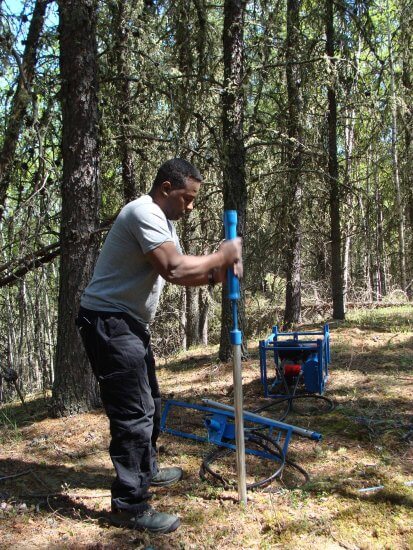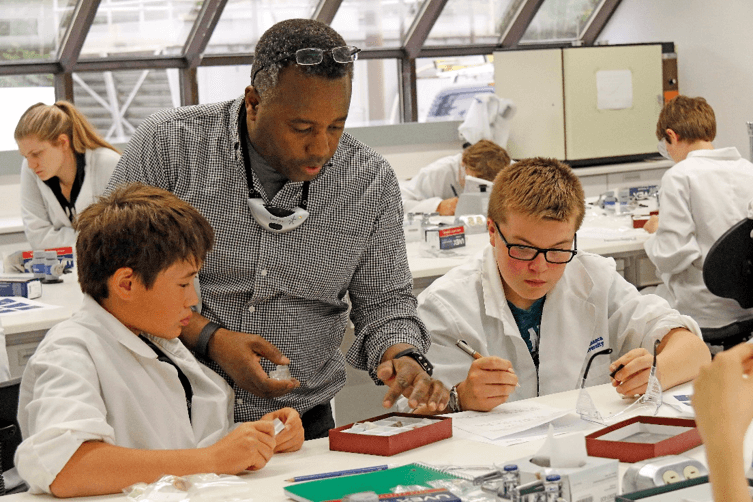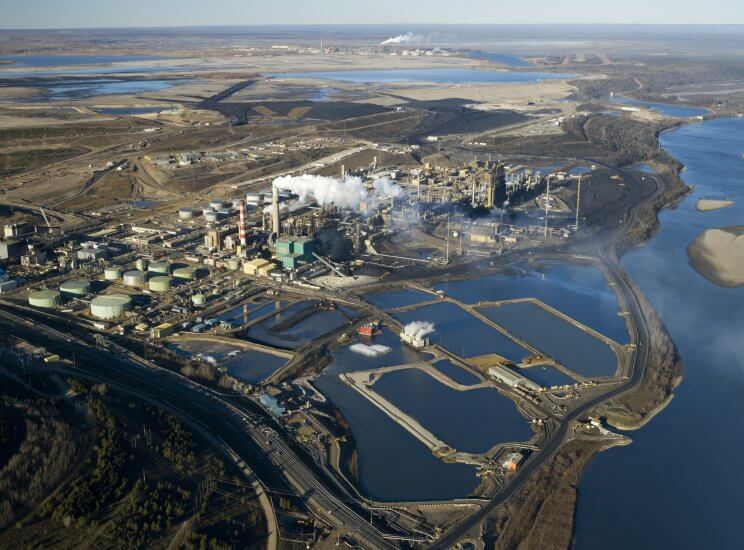Earth Day: AU geologist shares climate change perspective
Over the past several weeks, there have been reports from across the world about less air pollution in major cities, cleaner waterways, and wildlife being spotted in areas typically dominated by humans.

These reports are connected to the sudden and drastic decrease in human activity because of social isolation and related efforts to curb the spread of the global COVID-19 pandemic. But this is nonetheless a fitting backdrop for the 50th anniversary of Earth Day on April 22, 2020, the theme of which is climate change.
For Dr. Ken Munyikwa, an Associate Professor in Earth Sciences with the Faculty of Science and Technology at Athabasca University (AU)—which is also celebrating its 50th anniversary this year—it’s difficult to say for certain whether the current situation will be any more than a blip in the grand scheme of things. And the Earth itself will regardless continue despite environmental changes, human-induced or otherwise.
“The reality is, the world will not stop. Earth will always come to a new equilibrium in terms of the environment,” he said. “It’s just that humans may not be able to cope, to adjust, prevail, and thrive as we have done in the past.”
Earth's changing climate

As a Quaternary geologist looking at the period from 2.6 million years ago to present, much of Munyikwa’s work involves studying geologic records to try to reconstruct events that happened during this period.
His specific area of focus at present is the changes that have taken place in Alberta over the past 115,000 years, which marks the beginning of Earth’s most recent major cooling period, including a time when a giant ice sheet covered a large portion of North America including most of Canada.
In particular, his field work and research focus on accurately dating geological samples to understand with greater precision the timing and location of how that glacier receded from western Canada through Alberta—understanding for example precisely when it was that specific locations in central and northern Alberta became free of ice, and what happened on the landscape during that time.
“If we know the timeline, we’ll be able to know what was driving those changes,” Munyikwa said. “The importance of the research in general is it’s telling us the climate is always changing, and we learn about what drives climate change, the frequency of those changes, and we also learn about how the physical and biological environments responded to those changes.”
Munyikwa said throughout the past 2.6 million years, Earth’s climate has fluctuated between cold and warm periods. The major factor thought to drive these changes are variations in the amount of solar energy reaching the surface of the Earth due to slight changes in the Earth’s orbital patterns around the sun. These changes include variations in the shape of the orbit, changes in Earth’s distance from the sun, and fluctuations in the Earth’s tilt relative to the orbital plane.
Additionally, there have also been variations in the energy coming from the sun itself. Changes in ocean circulation patterns, and variations in the amount of existing ice sheets, though dependent on the other changes, also play a feedback role. Other climate change drivers such as volcanic eruptions can have unpredictable but shorter-term influences.
These factors have led to relatively predictable cycles of roughly 100,000-year glacial periods, followed by warmer inter-glacial periods of roughly 10,000 years. Earth is currently approaching the end of one of these periods of relative warmth.
Modern climate change

Munyikwa said geological research serves to identify the kinds of non-human-induced changes that have taken place through Earth’s history. In this way, a “baseline” level of change can be established, and then compared to the climate change attributed to human activity.
“When you bring in humans and they force some changes, then we can actually tell whether something amiss is happening or if something is wrong,” he said.
Most scientists generally think that pre-industrial records show global temperatures that were on average cooler than present However with the advent of the industrial revolution from the 1780s, which saw a significant increase in the use of fossil fuels like coal, things started to change.
“The temperature started to rise gradually,” he said. “From the 1850s, when we start having consistent global temperature records, we can show it in some detail.”
Once again, in the 1970s, he said there was a significant increase in global temperature, which is attribute to an increase in carbon dioxide—a gas that can trap the sun’s energy in the Earth’s atmosphere, thereby increasing temperatures.
“Changes in global carbon dioxide are well known in the geological record,” Munyikwa said. “And it is accepted that increases are linked to rises in temperature, which is why scientists think there might be something here to be concerned about.”
Climate impacts of COVID-19 may be short-lived

Munyikwa said geology focuses on time frames measuring thousands of years, so it would be difficult to say with any certainty what short-term changes mean for the “big picture.” This includes the changes over the past several weeks related to decreased human activity due to the COVID-19 global pandemic.
“But there certainly have been some comments that have been scientifically validate: the air is cleaner, and emissions are lower,” he said, “Cars are some of the bigger emitters, and there are fewer on the streets right now—there’s a glut of gas and petroleum resources.”
He suggested that in the grand scheme of things, this may effectively be a blip, or a statistical outlier, with respect to the longer-term trend of increasing carbon emissions and related temperature increases. Furthermore, this blip of reduced emissions may in fact be followed by a blip of increased emissions once restrictions are lifted as people may try to “make up for lost time.”
Regardless, Munyikwa explained he sees his role as a researcher as providing sound information to support policymakers in their decision-making process. And he, like many others, said he has appreciated the cleaner air and reduction in pollution that has been a side-effect of social-distancing measures.
“I’m not sure if there will be a motivation or desire to take more stringent guidelines after having enjoyed cleaner air for a period,” he said. “I would hope it would motivate policymakers to enact policies that promote a healthy atmosphere.”
If you’d like to get a better understanding of the long-term processes that affect the Earth’s climate and all life within it, there are many programs and courses available from AU’s Faculty of Science and Technology that address these topics.
You can get started on your path to higher education with AU today!